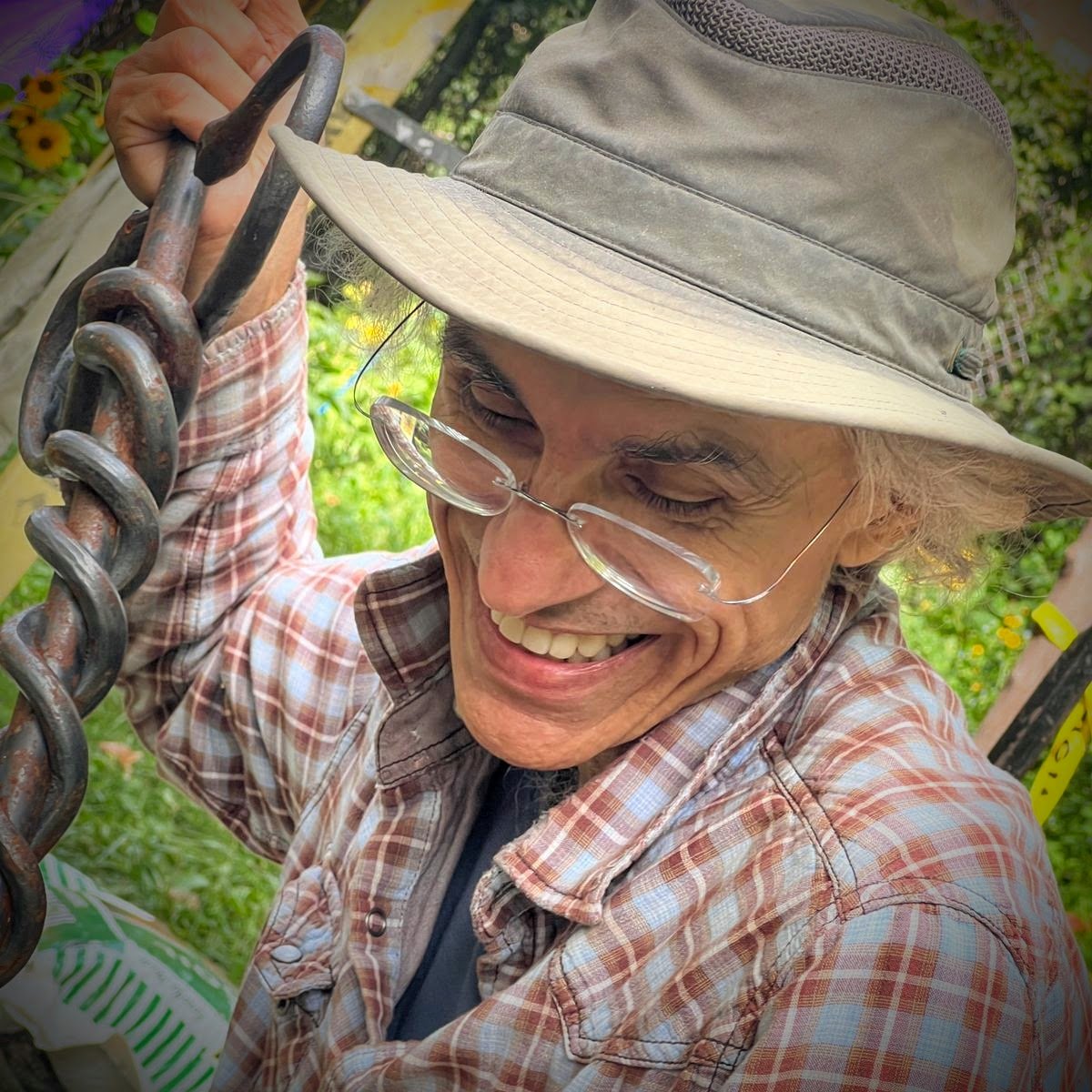The salix viminalis species, also known as basket willow, remains a rod throughout its lifetime and can sprout roots in new ground even after being harvested. The rods are malleable enough to be sculpted into creative designs. AreshEarth’s ongoing living willow sculpture project creates and maintains woven structures made from these willow rods. Designed and implemented always with the collaboration of the communities around them, these structures regenerate ecosystems and uplift human wellbeing in economically disadvantaged NYC neighborhoods. In the spring, willow catkins provide bees with one of their first sources of pollen for the year. Since their rods begin just off the ground, these shrubs also provide vulnerable fledgling birds with protection from raptors and rodents. In densely cemented areas facing the impacts of environmental racism, these sculptures provide much-needed oxygen and air filtration as well as community collaboration, beauty, and hope.
One of these sculptures is called the Children’s Fox Den and lives in El Jardín del Paraíso, a community garden in the East Village. It is 11 feet in diameter and ascends to 6 feet at its highest point. The living dome's sacred geometry spiral design weaves the interior to be visible through a leafy profusion while providing shade and a harmonious connection with nature. It is a playspace and a refuge where only children can easily enter through the entwined arches. Through interactive workshops, children learned the origins of the materials, who produced and harvested them, and that they are from sustainable sources. The structure is durable, long-lasting, and easily repaired when necessary, offering more opportunities to support the makers, the community, and the ecosystem. As the structure grows and strengthens, so do the children, knowing that they are connected to a beautiful living magical place in NYC.
AreshEarth has spearheaded five major living willow structures in NYC neighborhoods of color. Over the course of this journey, even more neighborhood teams will be empowered to co-create tree sculptures in empty tree pits, vacant schoolyards, community gardens, parks, on NYCHA property, and in vacant community spaces. Participants will continue to take part in the design, tree planting, and long-term caretaking of their tree creations. Together, we will plant, nourish, and protect thousands of trees where they are needed the most.
